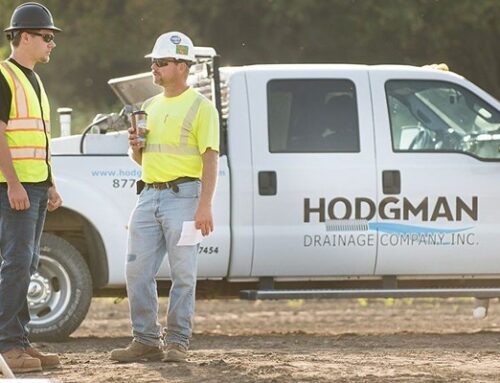Soil holding too much water can silently rob your land of productivity, limit crop yields, delay planting schedules, and increase input costs. That’s why drainage is often one of the first improvements made on newly acquired or poorly performing farmland.
Installing agricultural drainage in MN or other regions is a long-term investment in your land’s health, and the decisions you make upfront will shape your results for decades. Before any machinery rolls out, it’s worth slowing down to ask the right questions—and build a plan that fits your operation.
1. What Type of Drainage System Does Your Field Need
There’s no one-size-fits-all solution when it comes to field drainage. Options typically fall into two categories:
- Surface drainage reshapes or grades the land, allowing excess water to move off the field quickly.
- Subsurface drainage (tile drainage) removes water through buried perforated pipes installed below the root zone.
Understanding your soil type, topography, and crop rotation will help guide the system design. It’s essential to evaluate the drainage need and how the system will fit into your broader farm management goals.
2. What Will This Cost—and What’s the Payoff? | Agricultural Drainage in MN
Installing a drainage system depends on the field size, layout complexity, and access to equipment. It’s smart to request a quote from a contractor familiar with agricultural drainage so you can estimate the cost. But don’t stop at the invoice. Consider the long-term return. Benefits like timely planting, fewer drowned-out spots, improved soil trafficability, and more consistent yields are hard to ignore. Many systems pay for themselves in five to ten years, sometimes less. Ask your contractor for a simple ROI projection based on your operation’s crop data.
3. Are You Prepared for Regulatory Requirements?
Drainage improvements are subject to state and local regulations. If your land includes or borders wetlands, ditches, or watershed-controlled areas, you may need permits or environmental review before starting work.
Proper documentation can protect you from fines and delays and ensure your drainage plan doesn’t negatively impact surrounding land or ecosystems.
4. Who’s Designing and Installing the System?
Choosing a qualified contractor is essential. Look for someone with experience in agricultural drainage MN projects or comparable climates. Drainage isn’t just about installing pipes—it’s about hydrology, soil physics, and precision.
Ask to see past project maps, client references, and drainage layouts. Before starting work, good contractors will provide a complete system design, including outlet locations, tile spacing, and flow rates.
Also, ask what kind of post-installation support they offer. Drainage systems should be built to last for decades—but only if they’re correctly installed and maintained.
5. What’s the Maintenance Plan?
Even the most advanced drainage systems require upkeep. Outlets can clog with debris, rodents may chew through pipes, and sediment buildup can reduce flow. A maintenance plan ensures you can spot problems early and fix them before they affect crops.
Keep accurate maps of your tile system, inspect outlets annually, and consider adding control structures if your region experiences seasonal flooding or drought cycles.
In Minnesota and other northern states, freeze-thaw cycles can shift soil and damage systems over time. Annual inspections are especially important in these areas.
Also Read: Signs Your Farm Needs a Drainage System Upgrade | Farm Drainage Company in MN
Supporting Success with Agricultural Water Management | Agricultural Drainage in MN
Drainage isn’t just about getting rid of water—it’s also about managing how water moves across, through, and beneath your fields throughout the growing season. This is where agricultural water management becomes essential.
You can more precisely balance soil moisture by integrating practices like controlled drainage, cover cropping, and efficient irrigation where needed. This approach protects yields and soil health while reducing nutrient loss through runoff.
If you’re ready to invest in agricultural drainage in MN, Hodgman Drainage Company Inc. is here to help. We provide comprehensive ag drainage services, including design and installation, to help you optimize your farm’s water management.
Contact us today to learn more and get started on improving your farm’s productivity while protecting the environment.



